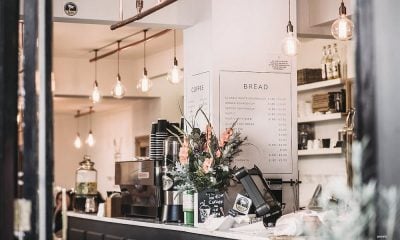Technology
Contactless Ordering Systems Help Restaurants Remain Viable

Do you know when the first contactless ordering system was introduced at restaurants? It was 2011 in China using Alipay, and in 2013, WePay enabled the mobile payment method.
Two years later, the USA restaurant chain Olive Garden rolled out a tabletop ordering and payment system. At the time, the tablet device also featured games for the kids to play, and the system was intended to assist servers, not replace them!
Why A Contactless Ordering System?
Now since COVID-19, contactless ordering systems have enabled eateries to open and maintain social distancing. Plus, there are other benefits for both customers and the business.
Self-ordering
Software for table ordering management designed to prevent contact is the safest way for restaurants to serve customers and reduce operating costs at the same time. Self-ordering provides the following benefits to restaurants:
Less printed menus
The self-ordering feature of contactless ordering systems has reduced the number of hard copy menus. Even walking take-out customers can be referred to the online menu for their order.
Plus, with fewer laminated menus, there is less cleaning between orders. If COVID-19 has taught us anything, it’s that viruses do live on hard surfaces, and thorough cleaning a prerequisite for maintaining healthy environs, particularly places frequented by lots of people e,g. eateries.
Reduced wait times
Guests won’t need to wait for someone to come to the table to take their order. All orders will go straight to the kitchen.
Larger orders
When guests can browse the menu and add items to their order, they’re more likely to make impulse purchases like extra appetizers and speciality beverages.
Loyalty program
Customers love loyalty programs and software with a fully integrated loyalty program that is seamless, so there’s no need to present a physical card to accumulate points for purchases.
Paper receipts
Reduced cost for thermal receipt paper. Thermal receipt paper is expensive. Some people don’t want paper receipts at all, not even credit card receipts. Contactless ordering systems can be programmed to give guests the option of receiving their receipt via paper or email.
Mobile Payments
Mobile payments weren’t all that huge until COVID-19 came along. Now a majority of people prefer using their phone to pay for goods and services.
Consumers Want Mobile Payment Options
Fast Casual published the results of a recent Appetize Contactless Technology Survey in which 1,081 people in the U.S. were asked how often they use their phone to order and pay for food or merchandise.
A total of 74% of participants said they use their mobile phone to order or pay at least once per week. A total of 48% of participants said they make purchases with their phone several times per week. The reason? Convenience.
Although only 25% of the survey people used their phone to pay for food or restaurant delivery, that number is sky-high compared to the 9.3% who use their phone for in-store purchases.
Surprisingly, 71% of participants said they preferred using self-service devices over interacting with a live person. Twenty years ago, that would not have been the case. Times have changed.
The Appetize survey also revealed that 43% of people want a “tap to pay” option at restaurants, 40% want to pull into the parking lot and order via mobile phone, 38% want curbside pick-up, and 34% want waiters to use handheld devices as opposed to paper order tickets.
Summary
The popularity of contactless payments using tablets or mobile phones is rapidly rising in every industry, and food service is at the top of that list.
Blending contactless ordering and payments with phenomenal customer service is a winning formula to keep your hospitality business open and top of mind with your customers.
You might be concerned that contactless ordering will remove the ability to provide exceptional customer service. This is a valid concern. However, safety is now the top priority. Guests want to feel safe, and reducing your physical contact with them is a step in the right direction to getting more custom.




